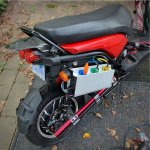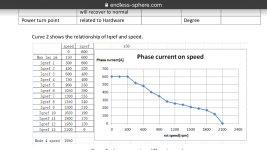MJSfoto1956 said:
larsb said:
(Not that it's needed for current limiting for mjsfoto but reason it's in the program)
Are you suggesting that QSmotor's recommendation was wrong? If so, then why? If not, then why make the accusation? I'm not understanding your point here.
The way all other controllers i've programmed work is that you set max DC current from battery, set max phase current and that's it - controller takes care of the rest.
You can set DC current in AE96600 program and that should stop any cutouts due to BMS shutdown. I think reason for the phase current setting in 13 steps is to be able to set field weakening and phase current separately at different rpms which is useful for IPM motors. But if you have a conventional motor i don't know why you would need to do it, phase current limiting should be handled by the controller.
Either it works like this or program is not well designed so that controller will fault if asked to give 600A phase at full rpm or it will allow higher DC current if phase current requested needs it - either way it's a poor implementation.
..It should not be needed to set the phase current other than to 600A if your motor can take it.
I've set controller phase current at 600A for all of the set points and drove a very short bit, then i got hall sensor issues in motor (not related to the setting). I could not test it out further due to the motor issue so i don't know how it behaves..
Reason i asked you to remove the post is that it doesn't contribute good data, instead it's misleading.
I also wonder why you mix in the "soft start", "quadrature current" explanation etc when you're actually not certain what you write. (if you would know it, then you'd understand the setting graph). Better to be a bit low key and stick with what you know, no pun intended - it will benefit all reading at ES.






